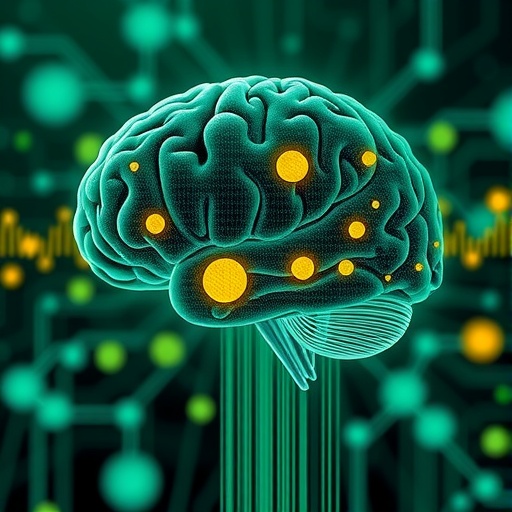In recent years, significant advancements in the field of human-machine interfacing have underscored the crucial role of the central nervous system (CNS) in the development of more effective and intuitive control technologies. The ability to accurately record and decode neural signals from the CNS is fundamental for the advancement of prosthetics, neurorehabilitation, and brain-computer interfaces. Traditional technologies have displayed limitations in resolution, sensitivity to environmental interference, and often pose invasive procedures for the user, which can impede widespread application. However, innovative approaches utilizing the body’s own mechanisms present promising alternatives.
Motor neurons (MNs) serve as the primary output layer for the CNS, acting as conduits through which signals from various areas of the nervous system are converted into commands that control muscle activity. This vital role positions MNs at the intersection of brain activity and muscle response, making them an ideal target for decoding and measurement techniques. Furthermore, recent research illustrates how deep learning algorithms can enhance the precision with which motor signals are decoded, turning raw data from muscle activity into actionable insights.
A significant breakthrough has emerged in the ability to interpret the spiking activity of spinal MNs in real time with a high degree of accuracy. This is achieved through the integration of muscle recordings with advanced deep learning techniques, which simplify the interpretation of complex signal patterns. This approach allows researchers to capture the neural dynamics associated with motor control without direct invasive procedures that could compromise both safety and comfort.
The innovative focus on peripheral neural interfaces emphasizes the use of muscle sensors as a non-invasive means of estimating vital neural activity. These sensors can detect faint electrical signals related to muscle contractions caused by MN activity. By piecing together this data, researchers can infer the types of signals MNs receive from the CNS – an exciting perspective that could usher in a new era of less invasive neurotechnologies.
Although the concept of peripheral neural interfaces is not entirely new, this research deepens our understanding of their potential in decoding high-frequency brain signals. These methods could be tailored to capture not just muscle stimulation but also the subtler signals that influence motor function without directly contributing to measurable force production. Such insights could lead to breakthroughs in interfacing with various types of assistive technologies, providing users with enhanced levels of control and engagement.
However, for these breakthroughs to transition from the lab to practical applications, several advancements must be realized. One challenge lies in improving the resolution and sensitivity of muscle sensors to ensure they can capture the nuances of neural signals that traditionally go unnoticed. Additionally, refining the algorithms designed to decode these signals is essential, as they must be capable of differentiating between overlapping signals generated by different underlying neural activities.
Moreover, there is a pressing need for collaborative efforts within the scientific community to conduct more exhaustive studies that validate the reliability of these peripheral neural interfaces in both controlled and real-world environments. Testing these technologies in varied settings will provide invaluable data on their applicability and robustness, helping to foster user confidence in their effectiveness. This is particularly vital for individuals relying on such technologies for mobility and independence.
An exciting prospect of these developments is their broad applicability beyond merely understanding human movement. For example, peripheral neural interfaces could be expanded to assist patients recovering from neurological injuries, facilitating better rehabilitation outcomes through more tailored therapy approaches. In parallel, as these technologies evolve, they may also find applications in sports science, where understanding the fine details of motor control can enhance athletic performance.
In essence, the potential of peripheral neural interfaces not only holds promise for restoring motor functionalities but could herald a new era in brain-machine interaction, ultimately blurring the lines between biological systems and advanced technologies. As researchers continue to explore these possibilities, the conversation surrounding neuroethics, accessibility, and user experience becomes ever more paramount.
To comprehend the full gamut of possibilities these interfaces could create, it is vital to maintain a multidisciplinary approach that encompasses neuroscience, engineering, and even psychological perspectives. This holistic understanding will facilitate the development of user-oriented solutions that respond adeptly to the needs of those who may benefit most from these cutting-edge technologies.
As the scientific community pushes the boundaries of what is possible in the realm of human-machine interfacing, the implications for society are profound. From enhancing the lives of individuals with disabilities to pioneering new pathways in understanding human motion and cognition, the exploration of peripheral neural interfaces represents a vital frontier for future innovation.
In conclusion, as technology continues to evolve, the necessity for advancing our understanding of the CNS and its components, like motor neurons, remains pivotal. The evidence supporting the use of peripheral neural interfaces is growing stronger, shining a light on a future where human beings and machines can work in concert more seamlessly than ever before. This interconnectivity will redefine our approach to movement, interaction, and understanding, ultimately shaping the future of neuroengineering and rehabilitative science.
Subject of Research: Peripheral neural interfaces for recording and decoding brain signals via muscle activity.
Article Title: Peripheral neural interfaces for reading high-frequency brain signals.
Article References:
Ibáñez, J., Zicher, B., Burdet, E. et al. Peripheral neural interfaces for reading high-frequency brain signals. Nat. Biomed. Eng 9, 1391–1402 (2025). https://doi.org/10.1038/s41551-025-01445-1
Image Credits: AI Generated
DOI: https://doi.org/10.1038/s41551-025-01445-1
Keywords: Peripheral neural interfaces, central nervous system, motor neurons, muscle sensors, human-machine interfacing, neuroengineering.




